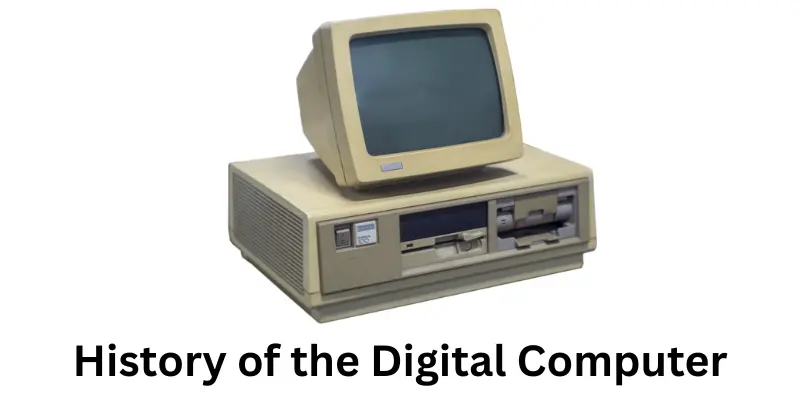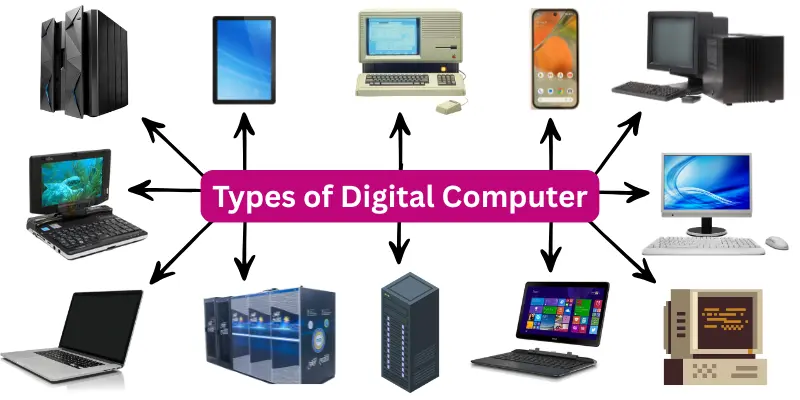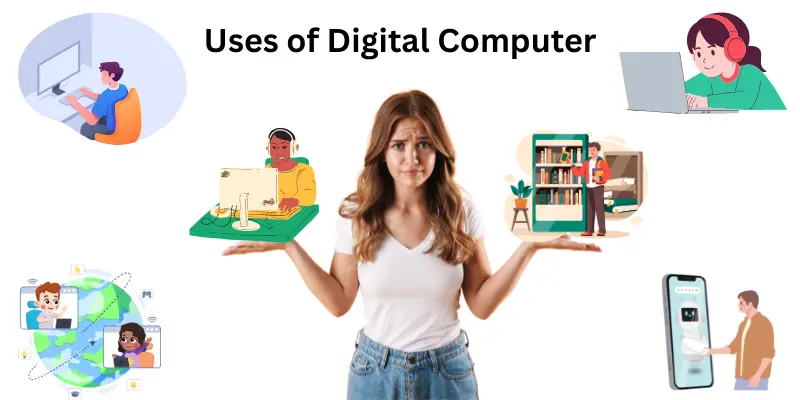Digital Computer – Smart Power with Some Weak Spots
Published: 11 Jul 2025
Sometimes learning or working becomes hard when things are slow or confusing. That’s where the Digital Computer helps. It makes learning fun, saves time, and does boring tasks in seconds. Whether you are drawing pictures, doing school projects, or watching cartoons, the digital computer makes everything smoother and faster.
What is a Digital Computer?
A Digital Computer is an intelligent machine that uses numbers, specifically 0 and 1, to perform its tasks. It helps us solve problems, do math, write stories, play games, and even send messages.
Unlike old machines that relied on guesswork or used moving parts, a digital computer provides exact answers through rapid processing and memory. It follows step-by-step instructions and can store a large amount of information, such as pictures, videos, or files.
It’s like having a tiny helper that listens, thinks, and gives the right answer in just seconds.
History of the Digital Computer
A long time ago, people used large and slow machines to perform calculations. These were not very smart and took a lot of time. However, in the 1940s, the first actual digital computer was developed. It was called ENIAC.

ENIAC was huge, as big as a room! However, it could perform math calculations faster than any person. It used tiny light switches called vacuum tubes to operate in binary code, or 0s and 1s.
Later, in the 1950s and 60s, computers got smaller and smarter. Scientists started using transistors instead of vacuum tubes. This made computers faster and more user-friendly.
In the 1980s, computers became small enough for people to use at home and at school. They were called personal computers or PCs.
Today, we have laptops, tablets, and smartphones, all of which are digital devices that function as computers. They are super fast and help us with almost everything.
Types of Digital Computers
There are many kinds of digital computers. Some are made for personal use. Big companies and scientists use some. A few are tiny and fit in your hand. Others are so large that they require their rooms. Every type has a unique purpose and serves different purposes. Here are 12 types of digital computers included.

- Microcomputer
- Minicomputer
- Mainframe computer
- Supercomputer
- Server
- Workstation
- Smartphone
- Tablet
- Laptop
- Analog
- Desktop computer
- Hybrid
Functions of Digital Computer
A Digital Computer does many smart things, but it follows a simple system. It gathers information from us, processes it, stores it, and then presents the answer to us. These steps are referred to as the functions of a digital computer. There are 5 functions of a digital computer that complete a task.
- Input: The computer gets data from a user.
- Storage: The computer saves the data for future use.
- Processing: The computer thinks and works on the data to find answers.
- Output: The computer shows us the result of the work.
- Control: The computer controls all steps and ensures they occur in the correct order.
Uses of Digital Computer
A Digital computer is an intelligent machine that helps us in many parts of life. It works fast, remembers things, and solves problems easily. Today, people use digital computers in a wide range of settings, including at home, in schools, offices, shops, hospitals, and even in space. The uses of digital computers are growing every day as technology continues to improve.

1. Personal Uses
There are 5 personal uses of digital computers in daily life.
- Entertainment
- Communication
- Productivity
- Online Shopping and Banking
- Education
2. Professional Uses
There are 7 professional uses of digital computer.
- Sending and receiving emails
- Making reports and documents
- Video meetings with teams
- Managing business records
- Creating presentations
- Designing logos and websites
- Keeping customer data safe
3. Scientific Uses
There are 7 scientific uses of digital computers.
- Studying weather and climate
- Doing space research
- Testing science ideas
- Controlling robots
- Checking health machines
- Solving big math problems
- Saving and sharing lab data
Advantages and Disadvantages of Digital Computer
A digital computer is like a super helper that works fast and follows your commands. It helps in schools, offices, hospitals, and even at home. However, just like any tool, it has both its advantages and disadvantages. Let’s look at the advantages and disadvantages of digital computers in a simple way.
| Advantages of Digital Computer |
|---|
|
| Disadvantages of Digital Computer |
|---|
|
Common FAQs of Digital Computer
Many people have small questions about how digital computers work or how to use them. Here are some common and easy-to-understand answers to help you.
We use them in schools, banks, offices, homes, and even hospitals.
No, it needs electricity or a battery to work.
Yes, smartphones are small digital computers.
No, they give correct results if the input is right.
It takes input, saves the data, processes it, and displays the output.
Yes, with simple learning, anyone can use them.
Conclusion
A digital computer is like a smart helper. It makes our work faster, easier, and better. From school to office and from home to hospital, it is used everywhere. Although it has some issues, its benefits are significantly greater. If we use it correctly, it can make our lives simpler and smarter.

- Be Respectful
- Stay Relevant
- Stay Positive
- True Feedback
- Encourage Discussion
- Avoid Spamming
- No Fake News
- Don't Copy-Paste
- No Personal Attacks

- Be Respectful
- Stay Relevant
- Stay Positive
- True Feedback
- Encourage Discussion
- Avoid Spamming
- No Fake News
- Don't Copy-Paste
- No Personal Attacks





